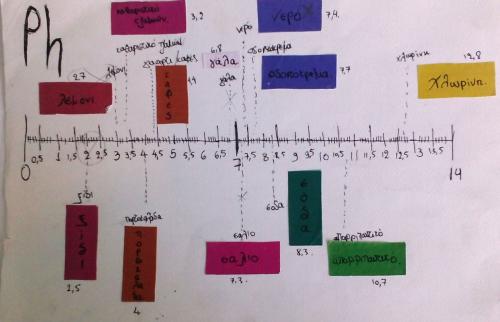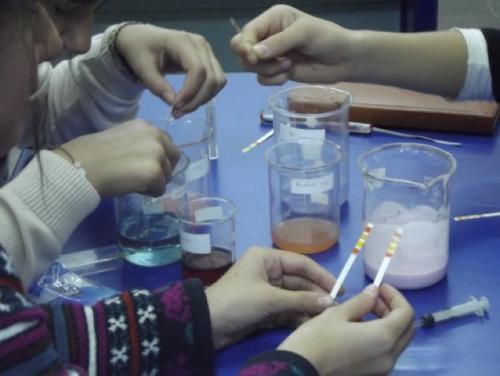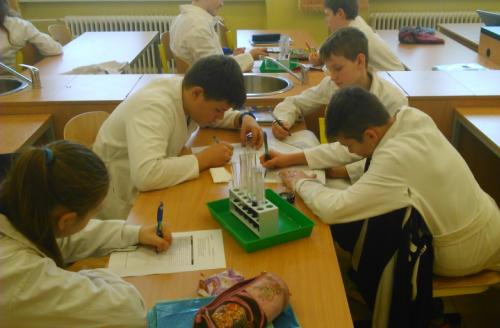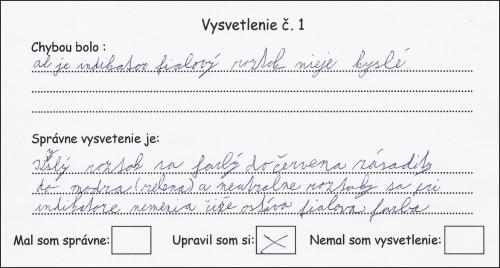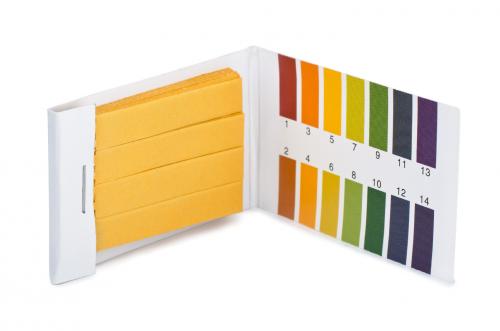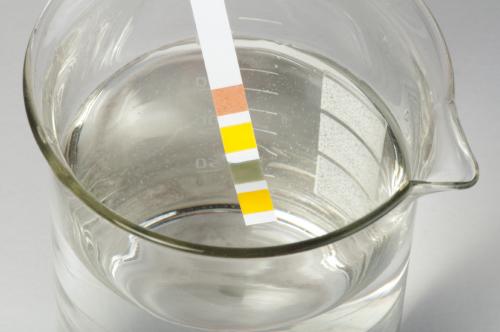The Acids, bases, salts SAILS inquiry and assessment unit aids students to explore acids, bases and salts as substances that are used in everyday life. The seven activities outlined seek to motivate students to understand basic chemical properties and how to detect acids and bases through experimentation using an indicator. Prior knowledge of terms like chemical elements, compounds, molecular structure, dissolution, is necessary for students to interact effectively with the new material. The unit complies with the curricula of lower second level schools, ages 12-15 years, and the suggested amount of time needed to complete all the activities is about 4 hours.
The students are given the opportunity to develop a number of inquiry skills such as planning investigations, developing hypotheses, forming coherent arguments and working collaboratively. In addition, they have the opportunity to enrich their scientific literacy and reasoning capabilities through making justified arguments and presenting evidence to back up conclusions. Assessment opportunities include teacher observation, formative assessment during class, assessment of student artefacts, use of rubrics and student self assessment.
This unit was trialled in Greece, Turkey and Slovakia, producing six case studies. The teaching approach in all case studies was that of guided inquiry. Inquiry skills assessed were planning investigations, scientific reasoning and forming coherent arguments. Use of a broad range of assessment methods is detailed, including classroom dialogue, peer- and self-assessment and evaluation of student artefacts.
- Acids, bases and salts in everyday life
- Chemical properties – how to detect acids and bases
- Use of indicators
- Lower
- Planning investigations
- Developing hypotheses
- Forming coherent arguments
- Working collaboratively
- Scientific reasoning
- Scientific literacy
- Classroom dialogue
- Teacher observation
- Peer-assessment
- Self-assessment
- Worksheets
- Student devised materials
- Other assessment items
The Acids, bases, salts SAILS unit was developed by the team at the University of Piraeus Research Centre (UPRC), as part of the SAILS project. The unit includes seven learning activities aimed at lower second level students, aged 12-15 years. The first phase is an introduction to the concepts of acids, bases and salts. Activity A: Introduction serves as an opportunity to review prior knowledge and develop hypotheses. The second phase is experimental investigation of proposed hypotheses, in which the students plan investigations and implement them. In this phase, students investigate qualitative and quantitative measurement of pH for commonplace acids and bases (activities B-C), before being introduced to salts in Activity D: Identifying salts. The final experimental investigation, Activity E: Acids dissolve salts, bases dissolve fats, enables students to distinguish between acids, bases and salts, based on their solubility properties. The third phase of the unit focuses on drawing conclusions – in Activity F: Conclusions, students consolidate and interpret their results, and relate them to their initial hypothesis. The final phase of this unit, Activity G: Everyday application, looks at application of the acquired knowledge in everyday life, enhancing students’ scientific literacy through understanding of real world applications of acids, bases and salts.
There are many worksheets provided in each phase to collect evidence of both content knowledge and development of inquiry skills. Provided within the unit are a set of dedicated assessment tools. For example, rubrics that may be used for assessing developing hypotheses and forming coherent arguments are included. Evaluation of the pH scale can be assessed through peer-assessment (using a rubric), while scientific literacy and content knowledge is assessed through examining the answers given to questions about acids and bases in everyday life (peer-assessment using a rubric). Assessment of working collaboratively is achieved through peer- and self-assessment.
Below you can find the full inquiry and assessment unit for download, as well as an archive with classroom materials, including student worksheets and assessment tools for teachers to be used during the activities if available.
Unit booklet Classroom materials| Concept focus |
Reviewing background to the task
Theoretical introduction
|
| Inquiry skills focus |
Developing hypotheses
|
| Scientific reasoning |
Classification of substances as acids and bases
|
| Assessment methods |
Classroom dialogue
Worksheets
|
Activity B: Qualitative classification of substances using a pH indicator extracted from red cabbage
| Concept focus |
Features of acids and bases
pH and indicators
|
| Inquiry skills focus |
Planning investigations
Forming coherent arguments
Working collaboratively
|
| Scientific reasoning |
Making predictions
Classification of substances as acids or bases
Drawing conclusions
|
| Scientific literacy |
Evaluate and design scientific inquiry
|
| Assessment methods |
Classroom dialogue
Worksheets
Student devised materials
|
| Concept focus |
Features of acids and bases
pH and indicators
|
| Inquiry skills focus |
Planning investigations
Forming coherent arguments
Working collaboratively
|
| Scientific reasoning |
Making predictions
Classification of substances as acids or bases
Drawing conclusions
|
| Scientific literacy |
Evaluate and design scientific inquiry
|
| Assessment methods |
Classroom dialogue
Worksheets
Student devised materials
|
| Concept focus |
pH and indicators
Identifying salts
|
| Inquiry skills focus |
Planning investigations
Forming coherent arguments
Working collaboratively
|
| Scientific reasoning |
Making predictions
Classification of substances as acids or bases
Drawing conclusions
|
| Scientific literacy |
Evaluate and design scientific inquiry
|
| Assessment methods |
Classroom dialogue
Worksheets
Student devised materials
|
| Concept focus |
Features of acids and bases
pH and indicators
Identifying salts
|
| Inquiry skills focus |
Planning investigations
Forming coherent arguments
Working collaboratively
|
| Scientific reasoning |
Making predictions
Classification of substances as acids or bases
Drawing conclusions
|
| Scientific literacy |
Evaluate and design scientific inquiry
|
| Assessment methods |
Classroom dialogue
Worksheets
Student devised materials
|
| Concept focus |
Reviewing results of experiments
Drawing conclusions
|
| Inquiry skills focus |
Forming coherent arguments
|
| Scientific reasoning |
Drawing conclusions based on evidence
|
| Scientific literacy |
Interpret data and evidence scientifically
|
| Assessment methods |
Classroom dialogue
Worksheets
|
| Concept focus |
Drawing conclusions
Knowledge transfer
|
| Inquiry skills focus |
Forming coherent arguments
|
| Scientific reasoning |
Forming conclusions based on evidence
|
| Scientific literacy |
Understanding how things relate to real world context
|
| Assessment methods |
Classroom dialogue
Worksheets
Other assessment items
|
This unit was trialled in three countries producing six case studies of its implementation (CS1 Greece; CS2 Turkey; CS3-CS6 Slovakia). All the case studies were implemented by teachers who had some experience in teaching through inquiry. However, the students involved had not been taught through inquiry before except for the case studies CS4 Slovakia (one lesson experience from CS3 Slovakia), and CS6 Slovakia (one lesson experience from CS5 Slovakia).
The ages of the students involved in the case studies were 12-15 years: 12 years for CS1 Greece, 14-15 years old in CS2 Turkey and 13-14 years in CS3-CS6 Slovakia. The students in each class were of mixed ability and mixed gender. CS1 Greece was implemented in 4.5 hours, while CS2 Turkey, CS3 Slovakia and CS4 Slovakia were implemented in one hour each. Finally, CS5 and CS6 (both Slovakia) were implemented in a total of five lessons.
Opportunities for assessment of the key SAILS skills and competencies were identified throughout the activities, and assessment methods include classroom dialogue, peer- and self-assessment and evaluation of student artefacts (worksheets, pH charts). CS1 Greece includes a post-implementation test.
The inquiry approach used in all the case studies was that of guided inquiry, where the teacher identifies the problem and poses multiple questions that lead the students to answer inquiry questions. In this mode of inquiry, students are able to exploit pre-existing knowledge in order to formulate initial hypotheses, which will then help them structure their research (plan investigations). The students in all the case studies worked in groups throughout the lessons but there was variation in both how the groups were chosen and the group size.
The starting point for the case studies CS1 Greece and CS2 Turkey was Activity A: Introduction. CS1 Greece implemented all activities, while CS2 Turkey was focused on activities A-E (introduction and experimental). CS3 Slovakia was based on activities B-C (experimental, qualitative and quantitative measurement of pH), and the same class later participated in CS4 Slovakia, where the starting activity was Activity D: Identifying salts. Finally, CS5 and CS6 (both Slovakia) include activities that the teacher proposed as adaptations of Activity D: Identifying salts. The teacher applied these activities into the teaching of topics "Exploring acidity of solutions" and "Exploring alkalinity of solutions" within the unit "Chemical compounds" with students of 8th grade at primary school.
Within the six case studies, the inquiry skills of developing hypotheses, forming coherent arguments, planning investigations, and working collaboratively were assessed in different ways. Additionally the content knowledge and evidence of scientific literacy and scientific reasoning was assessed. While the case studies highlighted the development of several inquiry skills, assessment was only described for a few of these skills. For some skills, the assessment was carried out after class and was based on a written artefact produced in class. In other situations, formative assessment guided the student learning during the class.
Below you can find the full inquiry and assessment unit for download (excluding the case studies), as well as an archive containing all the case studies.
Unit booklet Case studies| Concept focus |
Features of acids and bases
pH and indicators
Understanding salts
|
| Activities implemented |
Introduction
Qualitative classification of substances using a pH indicator extracted from red cabbage
Measurement of the numerical value of the pH
Identifying salts
Acids dissolve salts, bases dissolve fats
Conclusions
Everyday application
|
| Inquiry skills assessed |
Planning investigations
Developing hypotheses
Forming coherent arguments
Working collaboratively
|
| Scientific reasoning |
Drawing conclusions
|
| Scientific literacy |
Everyday applications of acids and bases
|
| Assessment methods |
Classroom dialogue
Teacher observation
Peer-assessment
Self-assessment
Worksheets
Student devised materials
Other assessment items
|
| Level |
Lower
|
| Age |
12
|
| Prior experience with inquiry |
No experience
|
| Concept focus |
Features of acids and bases
pH and indicators
|
| Activities implemented |
Introduction
Qualitative classification of substances using a pH indicator extracted from red cabbage
Measurement of the numerical value of the pH
Identifying salts
Acids dissolve salts, bases dissolve fats
Conclusions
|
| Inquiry skills assessed |
Planning investigations
|
| Scientific reasoning |
Observation
Classification
Making comparisons
|
| Scientific literacy |
Understanding acids and bases that are found in everyday life
|
| Assessment methods |
Classroom dialogue
Teacher observation
Student devised materials
|
| Level |
Lower
|
| Age |
14-15
|
| Prior experience with inquiry |
No experience
|
| Concept focus |
Features of acids and bases
pH and indicators
|
| Activities implemented |
Qualitative classification of substances using a pH indicator extracted from red cabbage
Measurement of the numerical value of the pH
|
| Inquiry skills assessed |
Developing hypotheses
|
| Scientific literacy |
Explaining phenomena scientifically
Designing scientific inquiry
|
| Assessment methods |
Classroom dialogue
Self-assessment
Worksheets
|
| Level |
Lower
|
| Age |
14
|
| Prior experience with inquiry |
No experience
|
| Concept focus |
Neutral solutions
Neutralisation reactions
|
| Activities implemented |
Identifying salts
Acids dissolve salts, bases dissolve fats
|
| Inquiry skills assessed |
Working collaboratively
|
| Scientific reasoning |
Addressing problem through logic and use of evidence
Forming conclusions
|
| Assessment methods |
Classroom dialogue
Self-assessment
Worksheets
|
| Level |
Lower
|
| Age |
14
|
| Prior experience with inquiry |
Some experience
|
| Concept focus |
How can chemists recognise an acid?
Getting to know indicators
|
| Activities implemented |
Qualitative classification of substances using a pH indicator extracted from red cabbage
Measurement of the numerical value of the pH
|
| Inquiry skills assessed |
Developing hypotheses
|
| Scientific literacy |
Explaining phenomena scientifically
Designing scientific inquiry
|
| Assessment methods |
Classroom dialogue
Self-assessment
Worksheets
|
| Level |
Lower
|
| Age |
13-14
|
| Prior experience with inquiry |
No experience
|
| Concept focus |
How can chemists distinguish acid from base?
|
| Activities implemented |
Identifying salts
|
| Inquiry skills assessed |
Developing hypotheses
|
| Scientific reasoning |
Drawing conclusions
|
| Scientific literacy |
Explaining phenomena scientifically
|
| Assessment methods |
Classroom dialogue
Self-assessment
Worksheets
|
| Level |
Lower
|
| Age |
13-14
|
| Prior experience with inquiry |
Some experience
|

